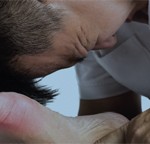NEW YORK (Reuters Health)—People with gout face a modestly increased risk, of about 20%, for developing osteoporosis, compared to people without gout, researchers in Taiwan suggest.
In their population-based study to examine a possible association between gout and subsequent osteoporosis, Dr. Victor C. Kok of Asia University (Taiwan), Taichung, and colleagues retrospectively analyzed data from a random sample of 1 million people age 20 or older from Taiwan’s Longitudinal Health Insurance Dataset. The new research extends the existing evidence base, which had only focused on osteoporotic fractures in people with gout.
In all, 36,458 patients identified as having gout were matched with a comparison cohort of 71,602 without gout. The mean age of the cohort was about 52 years; 73% were men.
Compared to people without gout, those with gout had significantly higher baseline rates of morbid obesity, smoking-related diagnosis, alcohol use disorder, hypertension, dyslipidemia, diabetes, kidney disease, and rheumatoid arthritis.
Follow-up lasted up to eight years, but to avoid bias, the study excluded osteoporotic outcomes in the first three years of follow-up.
In all, 517 participants in the gout cohort and 811 in the non-gout cohort were diagnosed with osteoporosis by a physician. In a multivariable-adjusted Cox model, gout was associated with a significantly greater hazard ratio for incident osteoporosis (HR, 1.2; 95% confidence interval, 1.06-1.35). However, the HR was statistically significant only for men with gout, not for women with gout.
Risk for incident osteoporosis also was associated with increasing age in the gout cohort, as it was with alcohol use disorder, dyslipidemia, and glucocorticoid steroid use at least 135-mg hydrocortisone equivalent, according to the January 30 Osteoporosis International online report.
Dr. Kok told Reuters Health by email that until further research confirms the results, “clinicians can initiate interventions for patients with gout to tackle the issues of osteoporosis screening and fracture prevention based on a discussion of patient preferences, fracture risk profile, and benefits, harms, and costs of medications.”
However, Dr. Howard L. Feinberg, of Touro University, Vallejo, California, told Reuters Health by email that this study’s findings are at odds with those of a 2015 study from China, which found that higher uric acid (as seen in gout) was associated with higher bone mineral density (less osteoporosis).
Dr. Feinberg also noted that although using insurance claims data allows researchers to look at a large population, “there are always errors in the information when it is obtained this way.” Osteoporosis risk also varies by race and nationality, he cautioned.
Pending further research, Dr. Feinberg concluded, “I would not recommend any change in clinical practice.”
Reference
- Kok VC, Horng JT, Wang MN, et al. Gout as a risk factor for osteoporosis: epidemiologic evidence from a population-basedlongitudinal study involving 108,060 individuals. Osteoporos International. 2018 Jan 30. [Epub ahead of print]


